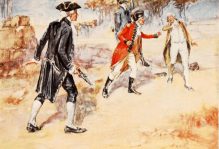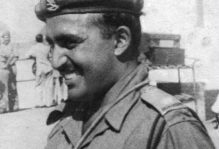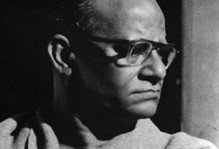When Government Performs, Should We Not Applaud
Editor’s Note: The flash floods in the hill state of Uttarakhand in 2013 claimed more than 5000 lives and left thousands stranded. There were tales of bravery, selflessness and sacrifice as India pulled off her largest and probably the most complex rescue and relief operation. There were many unsung heroes, and amongst them were the staff and officers of the State Government who as first responders pulled off an seemingly impossible rescue effort. Government servants in our country make headlines for all the wrong reasons - waste of funds, corruption, lack of foresight and ineptness . While we cannot say that this is entirely incorrect, our contention is that while we are vocal in our criticism why are our voices muted when the same government does something worthwhile and exemplary. The author of this article was in the field during the 2013 Uttarkhand flood disaster relief and rehabilitation phase and this writeup is based on his personal interaction with the people related to in this article.
Mr SA Murugesan, IAS, District Magistrate, Chamoli and Mr Ajay Joshi, Superintendent of Police. Chamoli walk over rubble and debris wrought by the flash flood during their assessment field trips just after the flood.
The task of evacuating 37000 people trapped in a flash flood, with roads blocked by landslides and the weather threatening to get worse by the minute across a swathe of 7500 sq kms of area is one job you would wish you never had. This is the job which Mr SA Murugesan, District Magistrate, Chamoli faced as he raced back on 15 june 2013 from Dehradun, where he had gone to attend an official meeting, to be at Gopeshwar, the district headquarter, in time.
As the lone ambassador car made its tortuous journey uphill  with roads  at many places  in precarious state due to incessant untimely rains, the District Magistrate was constantly on phone getting updates on the ground situation. The inputs were unnerving, all the rivers in the district were flowing much above the danger mark and rising unusually fast - this was an emergency.
While on the way, the District Magistrate contacted the Army and ITBP units in Chamoli district to quickly mobilise rescue operations. Thousands of pilgrims were stranded in Govindghat and Badrinath.
With roads blocked by landslides, Mr Murugesan had to traverse some stretches on foot and get into another car to reach the district headquarter. At 7 PM on 16 June the District Magistrate convened the meeting of his key officials at the control room located at the District Disaster Management Office to take some critical decisions which were to save hundreds of lives in the coming fifteen days. In this meeting the instructions were given quick and fast which were subsequently executed with precision and urgency.
With communications networks on the blink, the District Magistrate instructed the state owned Bharat Sanchar Nigam Limited (BSNL) to do whatever it takes to restart the mobile network and that too by next morning, for without communication the rescue and relief operations would remain stranded. This meant BSNL personnel reaching to the cell phone towers traversing dangerously overflowing rivers and rivulets by the night and operating the mobile towers through gensets since electricity had failed at many places.
The State Bank of India (SBI) was asked to keep its ATM at Badrinath working so that about 11000 pilgrims stranded there had the money supply to buy food and provisions from the local market. Currency chests were airlifted to Badrinath by SBI and the ATM stacked with currency.
District Magistrate of Chamoli, Mr. Â SA Murugesan, IAS, inspecting government response in the villages affected by the flood.
Mr Ajay Joshi , Superintendent of Police , Chamoli detailed the police administration response plan. His men were the first on the ground and helped evacuate pilgrims at Gobindghat to the upper reaches and thereby averted major loss of life.
Mr Neeraj Chauhan, IAS trainee with the district, volunteered to coordinate relief and evacuation operations at Badrinath, the ground zero of the disaster in the district, where he would remain stationed for next 25 days.
Dr Ajeet Gairola, the Chief Medical Officer laid the blueprint of the medical response. All health facilities including the village sub centres were to remain open 24 hours. The district hospital was on 24×7 standby and the available medical officers were detailed at crisis points along with Red Cross volunteers. The medical team in Chamoli attended to more than 11,000 OPD cases during the rescue phase. Doctors are not trained to jump from hovering helicopters, however this is what Dr Shah , Medical Officer, in his early fifties had to do to reach Pulna Bhyunder village which was completely marooned. Dr Shah went on to treat 102 patients.
Mr Sanjay Khetwar, Chief Development Officer of Chamoli district was to remain at district headquarter and coordinate with the State Government to get in additional assistance into the district and also to manage the helpline.
Civil Supply department opened the Public Distribution godowns and started food distribution and coordinated its movement under very trying situations. All other departments put their best foot forward.
The district magistrate stationed himself at the Joshimath helipad for next 13 days to coordinate rescue and relief work. 1200 staff from the civil administration were deployed on relief operations. They were securing food, managing land transportation for evacuation, maintain law and order, making available stay for thousands of victims, managed frayed nerves, provide medical help, restarted water, electricity and sanitation services, controlled epidemics and much more. Most importantly they demonstrated that the Government was in control and was doing its utmost. The civilian authorities also coordinated and configured the deployment of army and para military.
With the whole day spent in coordinating the relief and rescue work at the Joshimath helipad, Mr Murugesan would till late in the night answer to hundreds of text messages from people across the country inquiring the status of their near and dear ones. The District Magistrate would assure them that things were under control and that he and his team would bring the stranded pilgrims to safety. And the District. Magistrate and his team walked the talk- no person died during rescue and transportation in Chamoli district.
There would be no medals, there would be no applause. Nobody would know the people who climbed up the communication towers to ensure that the mobiles worked, or the drivers of the govt vehicles who drove on damaged road with the vehicles tyres few inches from a steep drop, or the ANMs who did not allow the routine children immunization to stop despite the calamity or the fogging staff who kept an imminent threat of an epidemic at Gobindghat in check and those numerous others from the government response team, who knew that Government had to stay and Government had to deliver- for it had to be them or no one,
Do critique the government when it does not work, but be generous in your applause when it does. For applause is a receipt of a job well done.
May we say ‘thank you to you and your team , Mr Murugesan’.






Sudipto,
Thanks for bringing to light the work of Government officials who did such a stupendous job in rescuing people. They would not get any “Well Done” or other kudos we in the corporate world are used to.
Regards,
Suvamoy